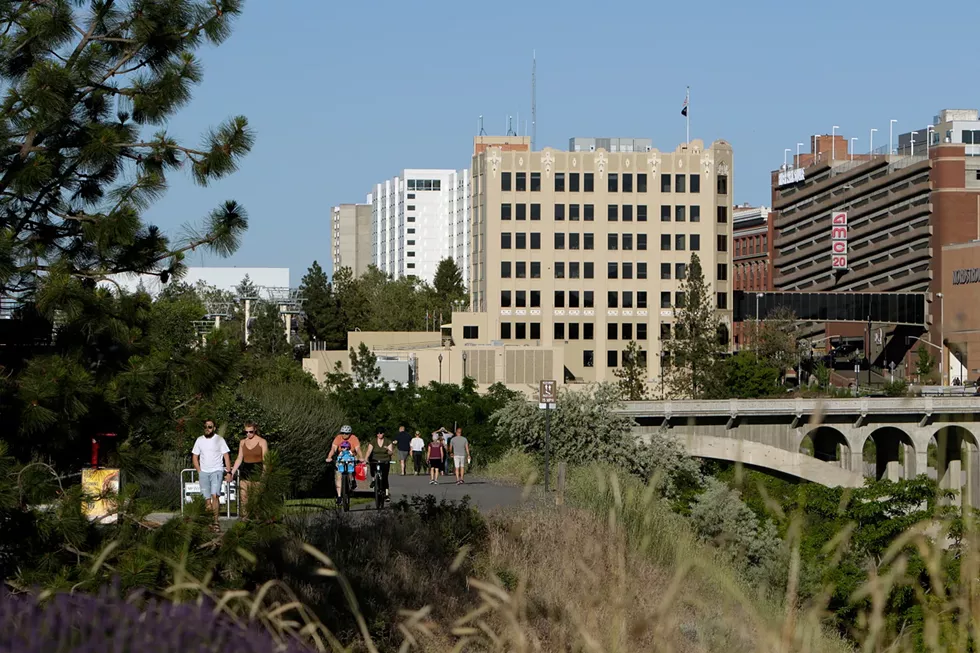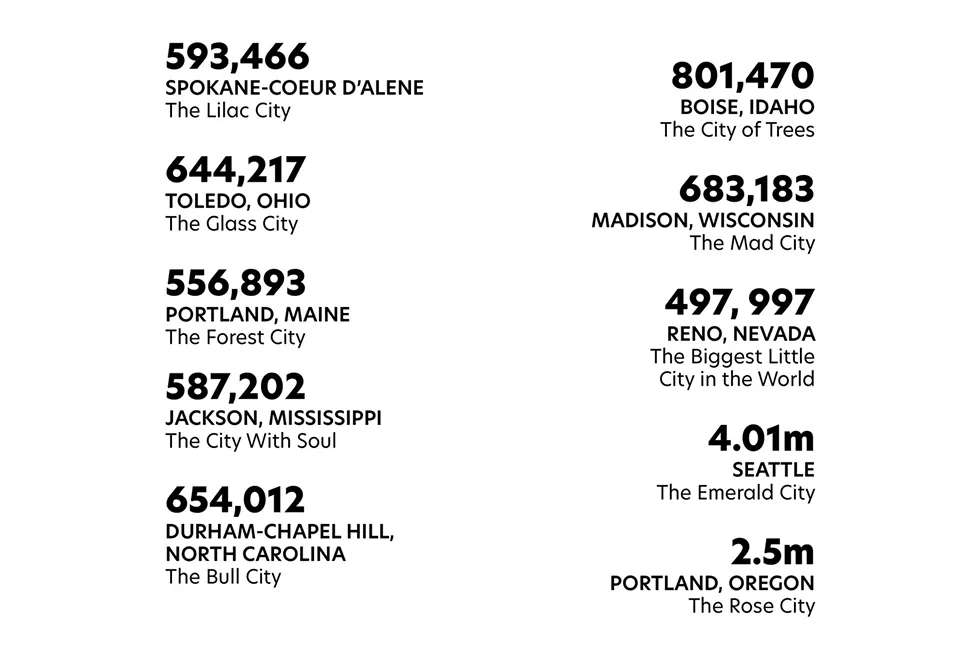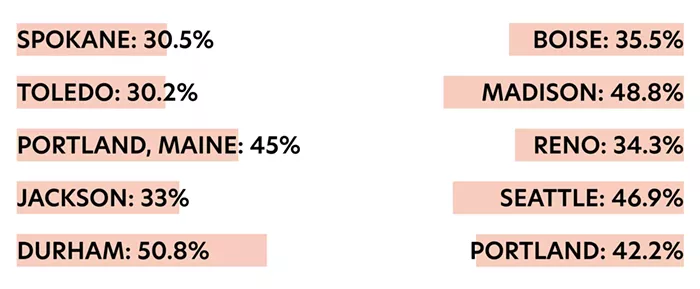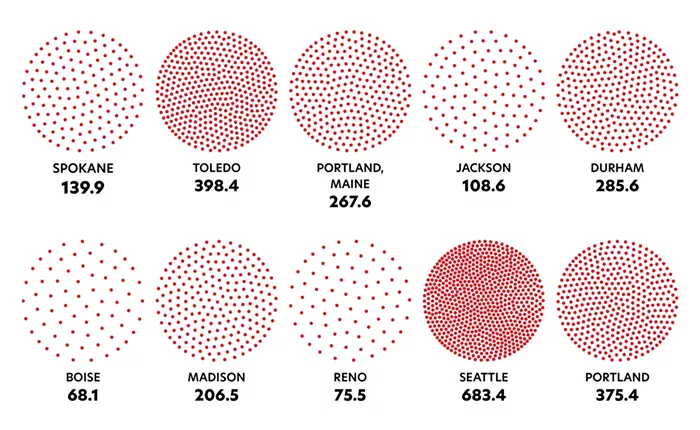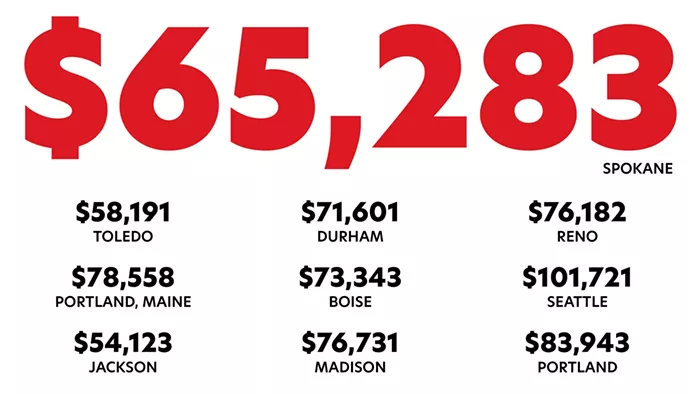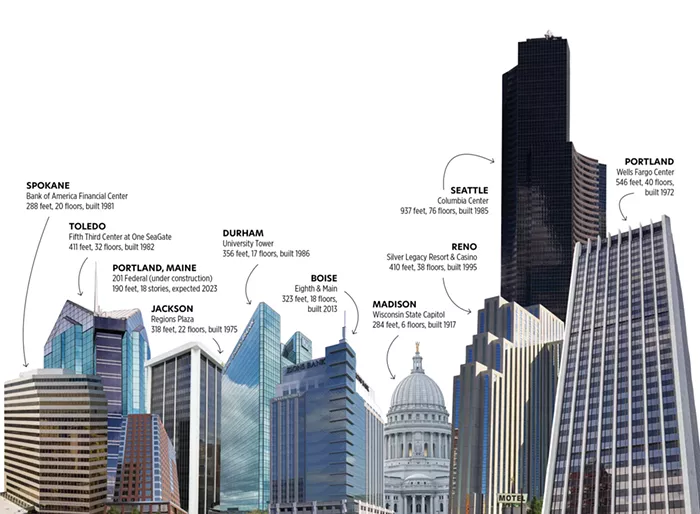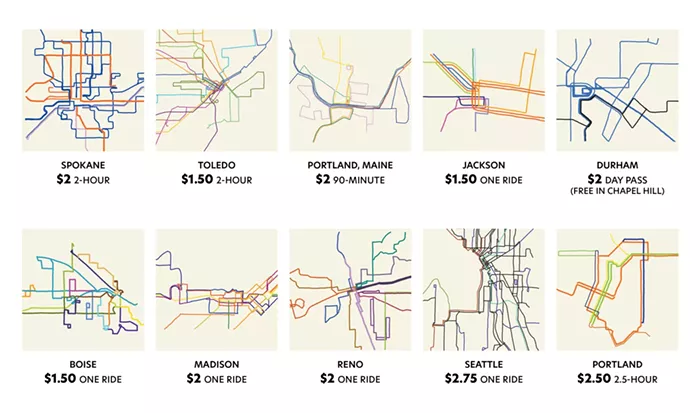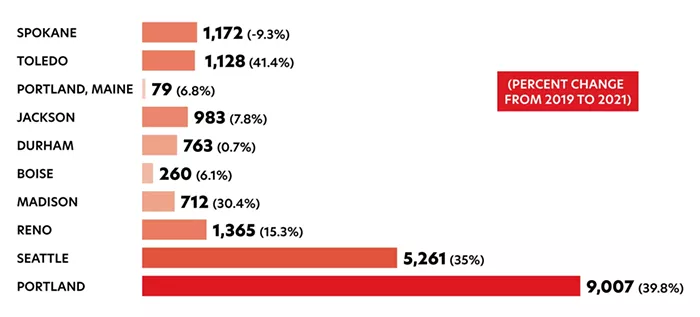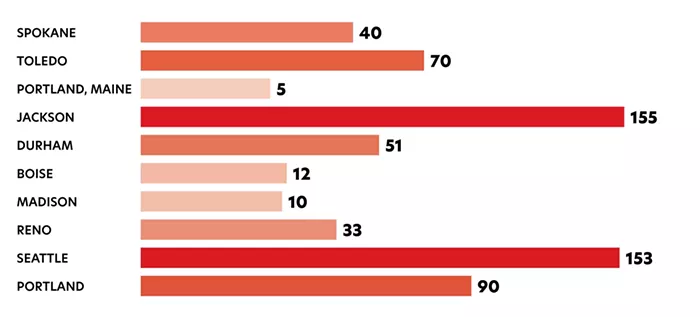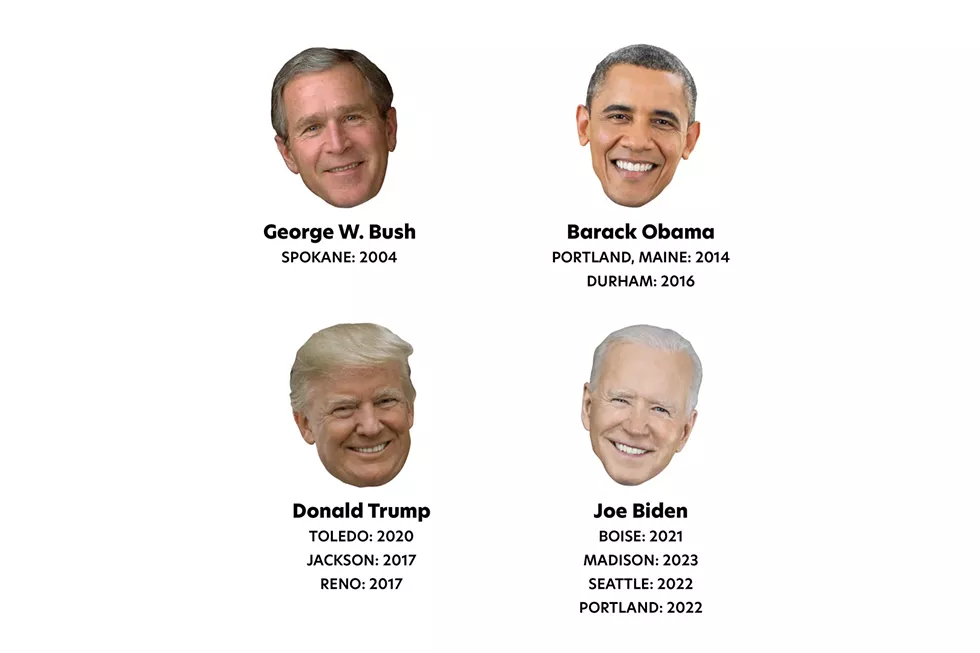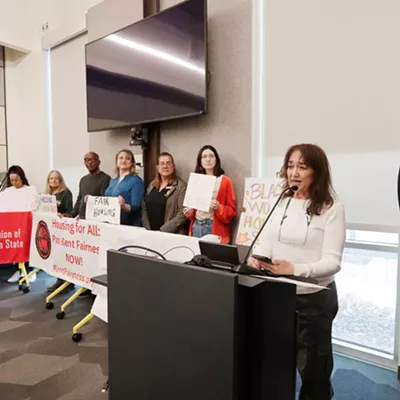Spokane and the Inland Northwest have a bit of an identity issue. Are we a city, or are we a refuge for people fleeing cities? Do we enjoy an enviable quality of life, or do we struggle to pay the bills? Do we value our isolation from the rest of the world, or do we celebrate the many people who call this place home? Are we growing, or have Spokane's best days passed us by?
Impossible questions to answer, perhaps, but one place to start is to see how we rate compared to similarly sized metro areas (and a couple of regional behemoths). By ranking the Spokane region against its peers, we hope to see how Spokane is really doing, potentially bust some myths and — hopefully — better understand where we live and what problems are ours alone.
A quick note on our data: While we used many different sources, and noted as much throughout this section, we did our best to keep what we were comparing the same. When we refer to a city, we're referring to its metro area. More specifically, we're referring to a metropolitan statistical area, a definition from the U.S. Census bureau defined as a geographical region with a relatively high population density at its core and close economic ties.
Take a look with clear eyes. Take stock of our city. It's past time for all of us to ask: Is this the place we want it to be?
— NICHOLAS DESHAIS
METRO POPULATION
Ask anyone what being a Spokanite means, and you'll get as many different answers as there are people. But the numbers don't lie: We are whiter, poorer and less educated than many of our peer cities.
PERCENTAGE OF WHITE RESIDENTS AND FOREIGN-BORN RESIDENTS
PERCENTAGE OF RESIDENTS 25 AND OLDER WITH A COLLEGE DEGREE
PEOPLE PER SQUARE MILE
MEDIAN HOUSEHOLD INCOME
PERCENTAGE POPULATION CHANGE
Everyone knows it: We're growing. In some ways, that's good. Our city is strengthened by new people, not to mention the taxes they pay. And while it's become more difficult to buy a house or afford rent, we avoided the biggest growth seen in Boise and, perhaps better, the recent shrinkage of Seattle and Portland.
PERCENTAGE CHANGE IN HOME VALUE
Exactly zero people will be surprised to see that our home values outpaced nearly every other city in our list over the past five years, except Boise. But look at the last year and you'll see a cooldown of sorts, putting Spokane on par with all of our peer cities, except again for Boise, which saw its red-hot market go ice cold.
MEDIAN RENT FOR ONE-BEDROOM APARTMENT
ANNUAL DEATHS INVOLVING FENTANYL
Overdose death data isn't reported the same across the country, with some jurisdictions still finalizing recent data, and others lumping fentanyl-involved deaths with those involving other opioids. In some cases, suspected overdose deaths aren't differentiated by drug at all. The data below is an annual estimation using the most recent data we could find (data for Durham-Chapel Hill was not available.)
CLOSEST SKI AREA TO CITY CENTER
TALLEST BUILDING
It seems like every year a developer files plans with the city to build a new skyscraper downtown. (The barren lots on the edge of the University District are a popular spot for these.) But our tallest building was built more than 40 years ago. Of course, that doesn't count the fictional 78-story GNB Tower that was built in Spokane in the sitcom How I Met Your Mother.
PRICE OF A BUS TICKET
Like every other transit agency, STA was hit hard by COVID. Yet transit officials say ridership has bounced back to 80 percent of pre-pandemic performance, and its City Line system is on pace to begin operating this summer. Still, the cost of a two-hour fare knocks on the upper range of fares. Unless, that is, you're under 18; then riding a bus in Spokane is free.
MAJOR POTENTIAL NATURAL DISASTERS
NUMBER OF MAJOR HOSPITALS (300 beds or more)
NUMBER OF UNIVERSITIES (more than 1,000 students)
CAR THEFTS REPORTED IN 2021
NUMBER OF COPS

